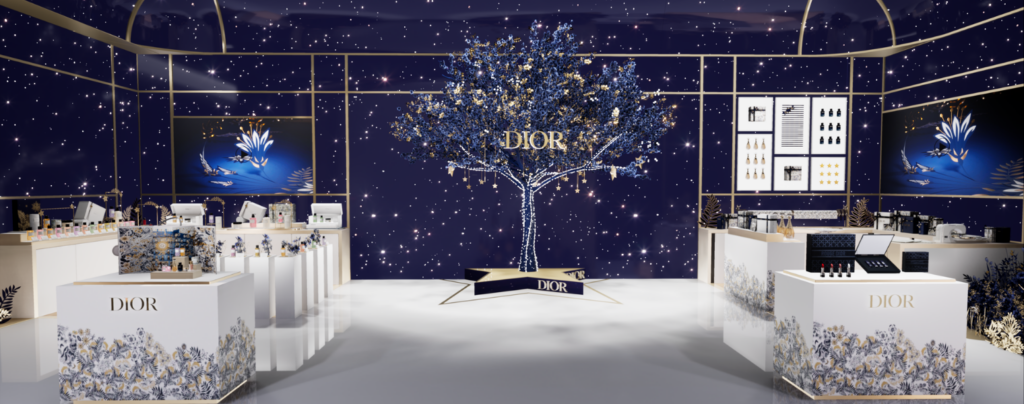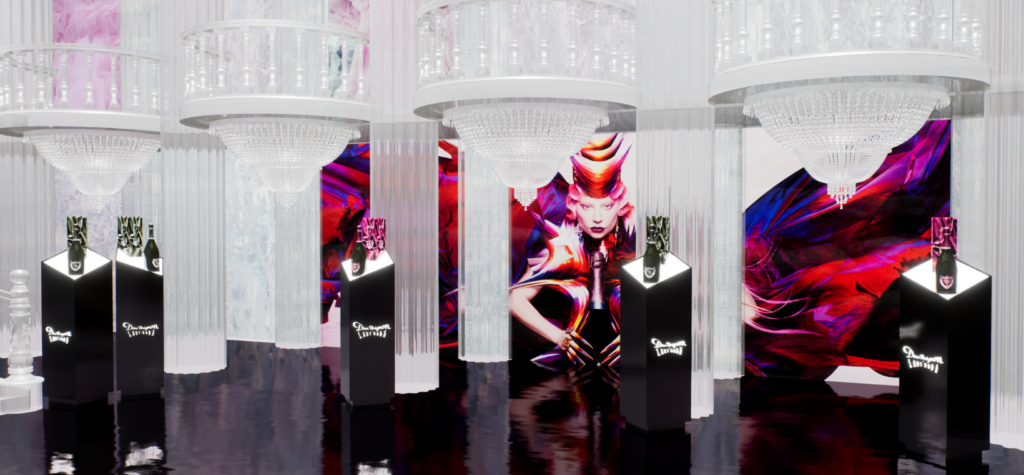We use cookies to improve your experience. By continuing to use this website you agree to our cookie policy.
Fashion is among the most prominent industries globally and has been for many years. While fashion trends come and go, then come and go again, and so on — the industry itself has continued to evolve and strive to meet the needs of an ever-changing, demanding consumer base. In today’s world, every industry has been enhanced and enjoys new success and creativity thanks to the continual advances in technology. And the fashion industry is no different, with AR and VR in fashion retail swiftly transforming from a novel idea to a vital tool for offering customers an immersive and engaging experience.
In this post, we’ll take a look at AR and VR in fashion retail — highlighting the key ways this type of technology can benefit the fashion industry and how AR and VR are shaping the sector’s future.

What is AR and VR Technology?
Augmented Reality (AR)
AR or ‘Augmented Reality’ involves using digital elements to enhance real life. Mobile phones have been a crucial aspect of the AR journey as it’s something you use every day, and it acts as a primary method of interacting with the world around you. Significant examples include scanning products or QR codes and receiving information or digital experiences — such as viewing yourself wearing digital attire, make-up, or other products.
One of the most notable examples in recent memory is the Pokemon GO app, which used AR technology to provide a fully immersive experience. People would use their phones to go outside and find/catch Pokemon.
Virtual Reality (VR)
Unlike AR, Virtual Reality (VR) does not add a layer to what we can already see, but a completely parallel universe and widely extensive digital experience. VR is a reality simulator. In VR, you can be anywhere at any time, experiencing the illusion of being somewhere completely different. It came as no surprise when VR headsets first entered the market and significantly impacted the gaming and entertainment space. But VR has become a very appealing resource and valuable tool for business and commerce, for which it is already making rapid headway.
Great examples include virtual tours of properties, attending virtual events, 3D product presentations and much more.
AR and VR in Fashion Retail
At a glance, fashion may simply appear to be the consistent supply and demand of clothes, shoes, and accessories — but it’s much more than that. For years, the fashion industry has been about selling dreams, stories and offering consumers rich experiences through incredible products. So it comes as no surprise that fashion retail’s eyes would turn to AR and VR technologies in an ever-evolving digital world, especially when you consider the impact of online retail.
While online retail has enjoyed steady growth for many years now, the Covid-19 pandemic most definitely ignited the current eCommerce boom. And regardless of how swiftly the Covid-19 situation is resolved, eCommerce shows no signs of slowing or reversing, with global eCommerce sales reaching as much as $6.5 trillion in 2023.
With this in mind, fashion retail must evolve and implement modern technology to cater to the needs and interests of today’s consumers — consumers who appreciate engaging digital experiences both online and in-store. Simply put, AR and VR technology make everyday shopping more enjoyable, immersive and, of course, much more exciting for your social media followers. This is an incredible benefit for brands as it increases engagement, which naturally helps boost sales while growing brand loyalty.

AR and VR Enhances the Shopping Experience
Regardless of how much you love fashion or love the shopping experience, it can be a very tiresome process. Travelling to a range of stores, finding suitable items in your size, trying them on, realising you don’t like them, then searching for alternatives that suit your needs and budget — these are all processes that take time and effort. So it’s no wonder modern consumers have welcomed eCommerce with open arms and benefit from a simple shopping experience from the comfort of home.
However, a key disadvantage of eCommerce is that you don’t get a realistic idea of how products look, feel, and, more importantly, fit you. Many of us have bought products online only to realise that they don’t look great, fit poorly, or just look cheap compared to the images online. This is where AR technology quite literally changes the game. And big brands such as Burberry have already embraced the technologies we’re speaking about, partnering with Harrods to provide The Burberry x Harrods virtual experience. But they’re not the only ones; check out some more examples of brands using virtual experiences here.
AR shopping tools directly deal with this exact issue. Not only does the use of this technology add instant appeal and excitement, but it steers consumers towards the most suitable products. Whether you’re in-store or shopping online, AR tech allows you to try on as many outfits as you like and see them on yourself without even touching a single item. So you see, implementing AR and VR in fashion retail is less about wowing customers with fancy tech — well, it is a little bit — and more about revitalising the crucial processes within the retail sector. Such advanced technology benefits product marketing and displays, customer service, delivery, and many other fashion retail processes.
What are the Benefits of AR and VR in Fashion Retail?
Brand Awareness: Fashion organisations can utilise AR and VR solutions to boost brand awareness. For example, AR app customers can scan products and learn more about features and specific details. This creates a brilliant opportunity to highlight important/unique selling points, which previously may have been overlooked. Engagingly highlighting USPs works wonders for brands who offer something others don’t but have found effective ways to convey their message.
Customer Engagement: Augmented Reality technology ensures customers are engaged throughout the shopping process. Aside from providing the ability to digitally ‘try on’ items, AR apps help people find the best stores, identify relevant products, purchase, share fun content on social media, and much more.
Customer Satisfaction: Customer satisfaction is crucial for any business in any organisation. For fashion retail, a great deal of customer satisfaction comes down to the shopping experience. Augmented stores, or stores with AR features, instantly enhance the shopping experience and make it more fun and satisfying. Additionally, it ensures it’s much quicker, easier, and hassle-free. All in all, it gives customers precisely what they need while avoiding the pitfalls of conventional retail.
Customer Retention: When you provide a unique and memorable AR/VR shopping experience, you increase your chances of retaining a more significant percentage of customers for return visits and business. If customers already love the shopping experience and their purchase products, implementing AR or VR provides the digital cherry on top. Something so unique and enjoyable encourages people to come back again and again and also to recommend your store to their friends or social media followers.
Cost Reduction: You will have noticed that many retailers such as ASOS offer a simplistic, customer-friendly return policy, which further encourages customers to buy. While this is great for gaining and maintaining customers, it does come at a cost if retailers cover all shipping costs. AR offers the ability to try on items in a realistic way and therefore reduces the number of returns retailers are likely to get, which means less money being spent on returned goods. However, one of the most significant cost-saving aspects of AR/VR is tech-based fashion shows. Real-life events cost A LOT of money. Costs will be reduced by making it a virtual event, or at least including AR/VR aspects. Although this will be appealing to brands anyway, the potential for cancelled events due to lockdowns has made it all the more appealing from a money and convenience standpoint.
Increase Sales: AR/VR shopping is super engaging, immersive, and offers features to play around with — offering the means to suit many needs. This experience ensures customers are more productive, curious, and genuinely excited while shopping. If they enjoy themselves and try on an abundance of items, they are more likely to find things they like, and the conversion rate naturally increases. Just think, if an app encouraged hundreds of thousands of people to leave the house and go hunting for Pokemon every day — imagine what it could do to their motivation to buy new clothes.
Do you want to learn more about the use of AR and VR in fashion retail? At Emperia, we work with ambitious brands to impact wildly engaging and compelling digital experiences. Get in touch to find out more.
